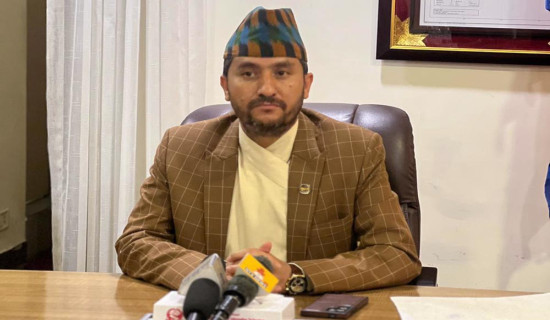- Wednesday, 14 January 2026
Water Related Migration
Rise of population density in the urban areas is not the sole reason of water scarcity in Nepal. This problem is not urban centric and even rural areas are facing critical deficits of water supply. So much so that some villagers are compelled to migrate in search of places where access to water is easier and more abundant. It is not surely a pleasant decision to leave the place where people had been living for generations but the hard fact is that options have to be sought for the sake of survival. A worrying scenario in recent years is that the traditional water sources serving the needs of communities for ages are drying up. And people leaving their villages due to water scarcity is frequently in the news.
A fresh news report of rural migration triggered by water shortage has come from the eastern district of Khotang where weeds are growing in the abandoned houses, farms and trails. This is a serious story of hardships that government planners and policy makers need to listen and address. The name of the concerned Khotang village is Rajapani which translates into Royal Water but its water availability status is pathetic. Only a few households out of total 55 families are now left behind but more are preparing to leave. The case of Rajapani is not isolated, unique and exclusive. There may be a number of other villages that may have faced the similar problem. The causes of dwindling and drying water sources are more than one but the rise of temperature and the trend of changing weather patterns is also blamed. The recent decades have witnessed very irregular and unpredictable manner of rainfalls.
Scientists say that the dynamics of monsoon that causes major rains in Nepal are changing. While we see torrential rains and cloudbursts in some places, prolonged dry spells and droughts are experienced in others. For instance, there was a long dry spell spanning for five months this year which affected the winter crop output. Haphazard construction of rural roads is also causing many traditional water sources to go dry. These projects hardly carry out the obligatory environmental impact assessments, and if they are done at all, they take place in paper only without assessing the actual field reality. These road tracks do not try to avoid being close to water sources and the digging works that make use of heavy machinery, destabilise the water channel. Growth of forests and green cover is vital for water source conservation. Environmentally insensitive deforestation along the rural road tracks have taken heavy toll on water conservation.
Massive exploitation of natural resources along Nepal's Chure belt such as sand mining, stone mining and illegal logging have caused the drying up of many water sources. This has had grave consequences on the availability of drinking water, water for the cattle and irrigation. The situation of water scarcity is expected to worsen in coming days as we longer dry spells and declining snowfalls. Increased snow and ice melting due to rising temperatures thinning the storehouse for our snow-fed rivers. Snow melting will increase water volume for the time being but in the long run, water flow in the rivers will decrease. The adverse impact of rising temperature and climate change on water sources is not a problem of Nepal alone. It is global. The World Meteorological Organisation says that frequent droughts, more extreme flooding, more erratic seasonal rainfall and accelerated melting of glaciers have cascading effects on economies, ecosystems and all aspects of our daily lives.

















